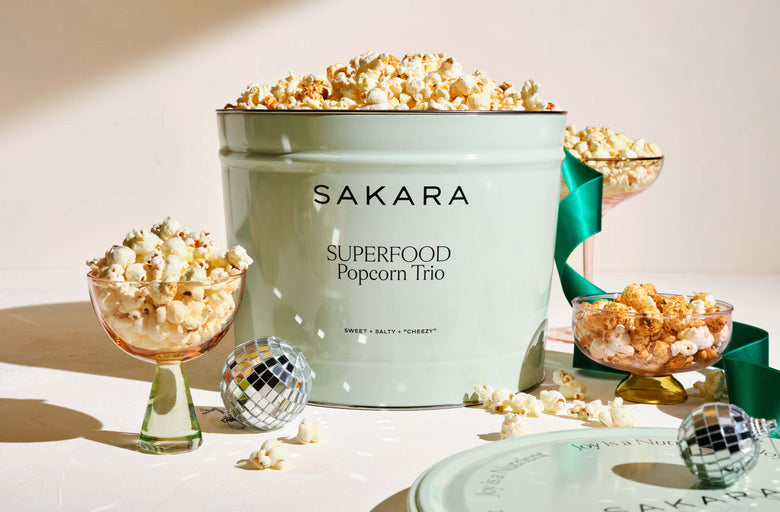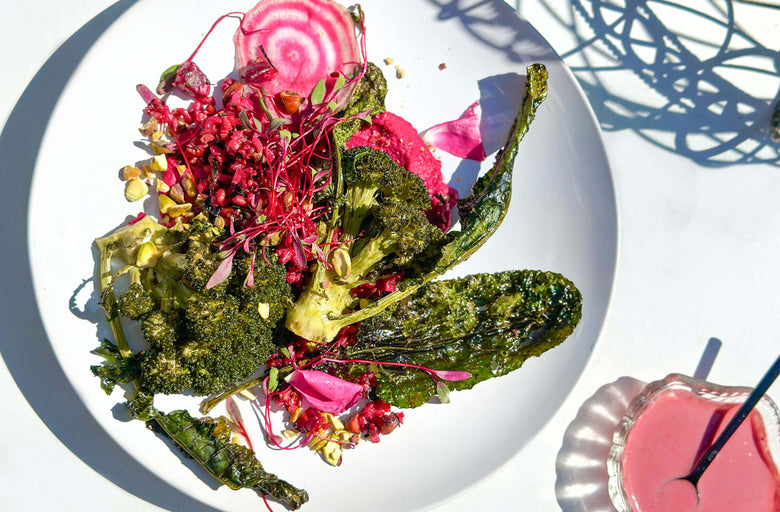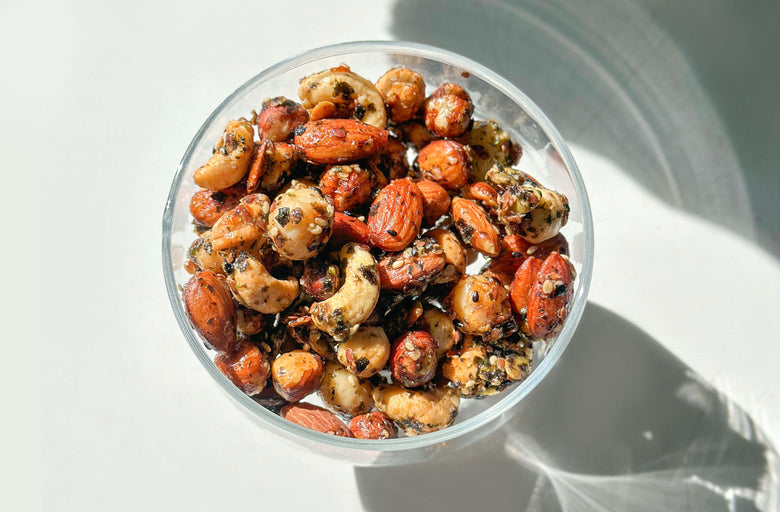Life is filled with dichotomies. There are boundaries and freedom, lightness and darkness, pulls and pushes, and yet the need to stand still, get very quiet, and listen. In every nook and cranny of life, at every street corner, balance is crying out at the top of its lungs for you to please, please, please run away with it and never look back.
Balance is totally and completely subjective. It’s something you can’t see, taste, or quite put your finger on. Hell, I’d even argue it’s something you can’t feel, but, instead, is more of a constantly evolving, shifting, spinning structure that builds the foundation for the rest of your life. It’s a frequency. It’s your Home Base.
When we sat down with yogi, dreamer, and adored member of our Sakara family, Ally Bogard, to chat about this structure that we all build for ourselves, from which we all grow, we ended the conversation with jaws wide open, cheeks stained with tears, and a newly twinkling wonder in our eyes.
The woman blew open our concept of Home Base, before holding our hands and gently and lovingly helping us rebuild each of our individual foundations, one wall at a time.
ON FREEDOM
“You know, most people refer to me as the wind, I like to come and go,” she says of herself. From a very young age, Ally recognized this internal scratching, whispering, oozing to be free, which eventually manifested itself into traveling the world alone, starting her own companies, and escaping her surroundings the second anything felt too stagnant, too grounded.
At that time, freedom was based on these external modes (not being bound, strained, or constricted by any relationships or commitments), so she could only free herself by violently breaking these physical shackles that came from the outside world.
“I can see the way my whole life has arranged itself to no longer needing to leave,” she says. This doesn’t mean she’s learned how to stay put or feels okay trapping herself in one place. It means she’s learned how to transfer those boundaries from her external world to her internal world. She has reinterpreted the concept of freedom to be this frequency she taps into – a frequency that is fueled by choice.
As women, we learn very early on to set up our own boundaries: “We learn how to set our boundaries with other people: you can come this close to me. You can and can’t touch me that way. I can give you this much time. When we're older, it becomes less about the way we externally set boundaries and more about our inner non-negotiables.”
Those inner non-negotiables are the choices we get to make – and those choices we get to make in our internal bodies are our freedoms. When you are the one creating the boundary, and you are the one honoring that boundary time and time again, then you are free.
ON WALLS
Not too far off from these boundaries, come walls. If boundaries are something that we have agency to create, walls are something that exist in our internal worlds, but that we don’t directly have agency over. Since we have no say in where or when they appear or how tall they grow, we tend to view them as flaws, obstacles, internal fires that need to be smothered. They bind us, right? Take away our freedom?
Ally disagrees – they are integral structural components to our foundations.
“Walls are awesome. They build us structure. I don’t want to be this boundary-less, free, disembodied, wall-less person…I love my grip, I love my friction, I love the places inside of me that are small and limited because at least it gives me something to do.”
Over time Ally has learned to grow respect for her walls. She has learned to swim upstream against the programming that told her she needs to take down her walls each time she runs into them. As someone who would seek out healers, teachers, friends, and lovers each time a wall came into sight, she’s now pausing in front of them, staring them in the eye, and even allowing herself to admire how high they can reach into the sky.
“I’m listening more carefully to them—are you actually trying to keep me safe? Is this an appropriate defense that is there, saying this may not be our home?”
As someone who genuinely and authentically calls her body her best friend, she has a deep-seeded respect for her body and its tenacity to keep her alive and safe.
All of these walls the body has created for her are a defense mechanism to do just that: "Change is scary because change is death. We were designed to hold the position we were in yesterday—physically, mentally, emotionally.” We develop patterns to protect ourselves and these create walls. They are here to keep us safe.
A lot of practices today will tell you to let go of that early pattern, that wall, that wound. But Ally asks you to hold it close. To let it in, see it, acknowledge it, and even love it.
Hold it close and say, ‘You kept me alive. Thank you. I totally honor you. Thank you…I don't need you to be in hyper drive. I’ve got this as an adult human with agency. Let me just hold you tighter until you know that you're okay’.
(Ally's Altar)
ON HOME
We have these bodies – these places we call home – that give us all the freedom we could ever ask for and the foundation from which to grow. Within these homes, we set boundaries for ourselves, we set boundaries for others, we come into contact with our walls, wounds, and limiting beliefs that our bodies have created for us. So where, when, and how are we free? Freedom comes from our ability to play within these structures, climb them, touch them, question them, and, every now and then, decide that they don’t belong there, that they no longer serve us.
“The definition of health and the definition of balance and the definition of freedom are all the same to me – they are all the capacity to make a choice based off of what I want. Then it always feels free.”
So when you start to hear that internal whisper, urging you to break free, do exactly as Ally says: hold that feeling close – really close – and tell it you’ve got it under control. That you can let her free because you, and you alone, have the ability to set her free. You don’t need to look elsewhere, or ask for anyone’s permission: you can create space for her right there, in your own world, in your own body, in your home.
That is the balance between roots and independence, walls and fluidity, growth and safety.
That is choice.
That is Home Base.








